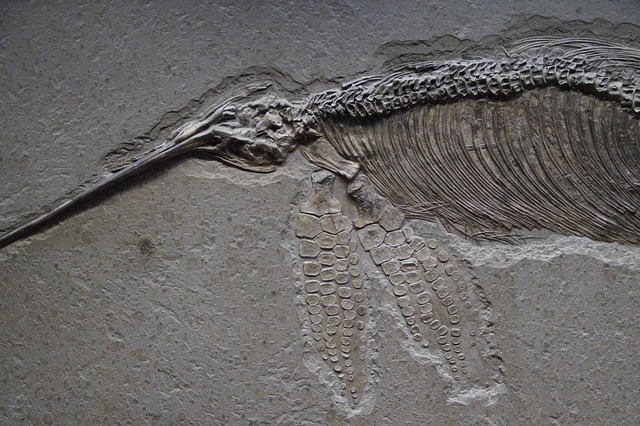A fossil discovered from an animal never seen before has given scientists a clearer picture of how things looked like in the evolutionary period after the biggest mass extinction the Earth has even known, a report from Discovery News states.
The new species, Sclerocormus parviceps, was an ichthyosaur, but looked nothing like all the other ichthyosaurs previously found and studied.
Ichthyosaurs were marine reptiles that lived in the Lower Triassic period, the same time as the earliest known dinosaurs. Most of them had dolphin-like profiles, with strong tail fins, long snouts and sleek bodies. But this new species had a stubby snout and a long tail, without the big fin at the end. In addition, ichthyosaurs generally had plenty of teeth for catching food, but this one had no teeth at all. Scientists believe the snout was used for sucking food in like a needle instead.
The fossil dates back to just after the Permian-Triassic time catastrophe, which killed nearly all marine species and the majority of land vertebrates. Scientists had thought evolution for marine reptiles from that period was slow. However, this new development is challenging that school of thought.
Olivier Rieppel of the Field Museum, co-author on the study, says in a statement that,
Sclerocormus tells us that ichthyosauriforms evolved and diversified rapidly at the end of the Lower Triassic period. We don’t have many marine reptile fossils from this period, so this specimen is important because it suggests that there’s diversity that hasn’t been uncovered yet.
Rieppel also says Sclerocormus gives insight into real-world evolution in action. “Darwin’s model of evolution consists of small, gradual changes over a long period of time, and that’s not quite what we’re seeing here,” he explains. “These ichthyosauriforms seem to have evolved very quickly, in short bursts of lots of change, in leaps and bounds.”
Rieppel thinks that this discovery can help humans better understand what life forms do when there is a need to rebound from a crisis. “We’re in a mass extinction right now. Not one caused by volcanoes or meteorites but by humans,” he says. “While the extinction 250 million years ago won’t tell us how to solve what’s going on today, it does bear on the evolutionary theory at work. How do we understand the recovery and rebuilding of a food chain, of an ecosystem? How does that get fixed, and what comes first?”
The study, conducted by Rieppel and a team on scientists from all over the world, has been published in Scientific Reports.
























